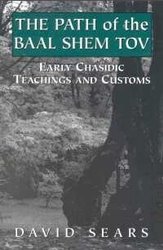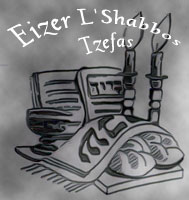A Simple Jew
אַשְׂכִּילָה בְּדֶרֶךְ תָּמִים
Thursday, February 01, 2007
Bnei Avraham Ahuvecha: Gerim in Chassidic Thought

Sudilkover Rebbe's Advice
Chassidus
Degel Machaneh Ephraim
Shtetl Mysteries
Shtetl's Shul
Shtetl Pictures
Seforim Printed in the Shtetl
Shtetl Map
Shtetl Minhagim
Shtetl Niggunim
Highly Recommended



Chabakuk Elisha
Rabbi Dovid Sears
Rabbi Micha Golshevsky
Rebbetzin Yehudis Golshevsky
Rabbi Lazer Brody
Rabbi Ozer Bergman
Rabbi Yakov Horowitz
Rabbi Avraham Greenbaum
Rabbi Nasan Maimon
Rabbi Chaim Kramer
Rabbi Binyomin Rosenberg
Rabbi Shmuel Rosenberg
Rabbi Tal Zwecker
Rabbi Zvi Leshem
Rabbi Fishel Jacobs
Rabbi Shlomo Slatkin
Rabbi Yitzchok Wagshul
Rabbi Eliezer Shore
Rabbi Tanchum Burton
Rabbi Perets Auerbach
Rabbi Betsalel Edwards
Rabbi Shais Taub
Rabbi Ephrayim Portnoy
Rabbi Yaacov Yisroel Bar-Chaiim
Rabbi Yehoishophot Oliver
My Wife
Dixie Yid
A Talmid
Yoni Lipshutz
Shlomo Katz
Space Cadet
Akiva
A Yid
Mottel
Neil Harris
Yitz...
Michoel
Shoshana (Bershad)
Yossele Kvetch
Yitz
Moshe David Tokayer
Bob Miller
"Believing Gentile"
Alice Jonsson
Psycho Toddler
Avakesh
Treppenwitz
Chana Jenny Weisberg
Neshama
MoChassid
Jameel
Shoshannah Brombacher
Rafi G.
Yirmeyahu
Chaim
Vegetarian Chassid
A Mile Down the Road
Yossi Katz
Long Beach Chasid
Tzedakah


Some Rights Reserved

Online Torah Resources
Other Useful Links



4 Comments:
Ah, the rare fruit of the froot loop tree. At which point in the seder does one eat these?
Hey I just wanted to know what the source of leaving food out ofr the birds was rabbinically. I mean i know that the mishna berurah talks about it but where is the actual story about the birds eating nadav and avihu's leftover manna? Where does it exist?
The Maharal explains that we distribute food to the birds as a reminder that they also sang to Hashem when the Jewish people were saved from the Egyptians.
Other commentators explain that we have a tradition that when the Jewish people passed through the sea, children plucked fruits that miraculously grew in the sea and distributed them to the birds. We remind ourselves of this tradition by distributing food to the birds or having the children do so when we read this parsha.
Others explain as follows: Moshe told the Jewish people that on Friday they should gather a double portion of ma’an because no ma’an would fall on Shabbos. Early Shabbos morning Dasan and Aviram went out and distributed ma’an that they had saved. Their intent was that when the people would wake up, go outside and see the ma’an they would call Moshe a liar. This would weaken Moshe’s authority among the people. This tragedy was prevented when the birds came and ate up the ma’an before the Jewish people woke up and had a chance to come outside. In recognition of their good deed we feed them every year at this time.
And another reason for this custom:
In parshas Lech Lecha we learn about the bris bein habisarim. Avraham asked Hashem, “How do I know that my descendents would inherit Eretz Yisroel.” Hashem said;
“Take to Me three heifers and three goats and three rams and a turtledove and a fledgling. He took all these to Him and he cut them in the center and placed each piece opposite its counterpart; but the bird he did not cut up. (Bereishis 15:9-10)
Shortly after Hashem said to Avraham,
“Know with certainty that your offspring shall be sojourners in a land not their own, they will enslave then and they will oppress them four hundred years and also the nation that will enslave them I shall punish and afterwards they shall leave with great possessions” (Bereishis 15:13).
Rashi explains that the animals represent the nations of the world. The bird represents the Jewish people. The splitting of the animals is symbolic that the nations of the world who oppress the Jewish people will perish. The bird that was not cut up represents the survival of the Jewish people.
The splitting of the animals and the survival of the bird was a symbolic representation of Hashem’s words. Although the Jewish People would be oppressed by the Egyptians for four hundred years they will survive. Their enemies are the ones who will perish.
In this week’s parsha we read about the splitting of the sea, the destruction of the Egyptian people and the survival of the Jewish people. We read about the fulfillment of the bris bein habisarim. The four hundred years have come to an end. Hashem has punished the Egyptians. The symbolic splitting of the animals has now been fulfilled at least with regard to the Egyptians. The Jewish people have survived. The symbolic fulfillment of “but the bird he did not cut up” has also been fulfilled. This week we distribute food to the birds as a reminder that Hashem’s promise has been fulfilled. “The bird he did not cut up.” The Jewish people will always survive.
From: http://members.aol.com/eylevine/5765beshalach.htm
The Sefer HaToda'ah mentions an additional reason why we feed the birds this week. The chirping of birds is the way that birds praise G-d for providing them with their needs. Because, on this week, we too sing praise of G-d, we recognize the constant song of praise chirped by the birds by feeding them, as a form of reward.
Post a Comment
<< Home